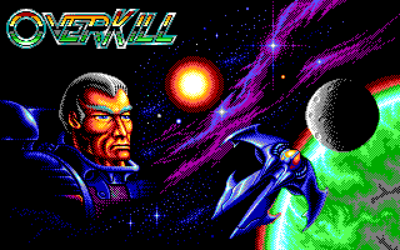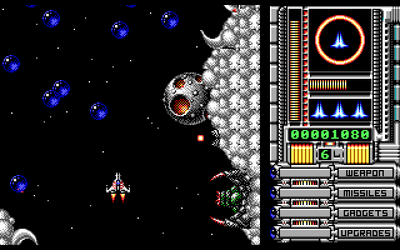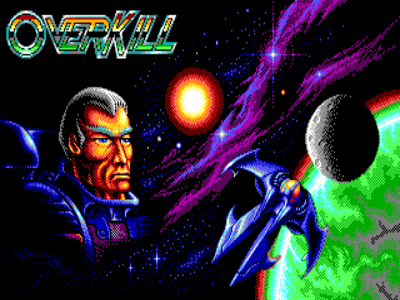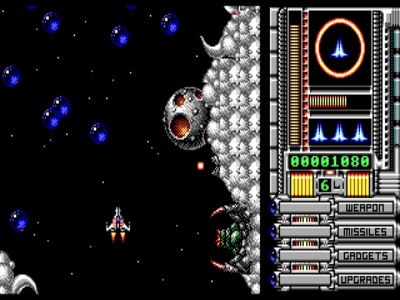First post, by xjas
- Rank
- l33t
I've brought up in the past that not all DOS stuff strictly adhered to a 4:3 aspect ratio, but I've been looking around for some concrete examples. Today I noticed one of my favorite little shmups, Overkill, was actually one of these. I was playing it on a 16:10 monitor and it looked fantastic - the circles were round and the art (especially the portrait) didn't look stretched.
Here's a couple screenshots (doubled to 640x400), assuming you're viewing these on a square pixel monitor/mode they should look good:
And here they are "un-corrected" to 4:3 :
Obviously wrong. Look at the shape of the planets, the shield indicator, the bubble enemies, etc.
This isn't just a case of lazy art, this game has wonderful artwork and the artist was easily competent enough to account for the video mode. Instead it seems a deliberate choice was made to draw for square pixels. AFAIK this game is DOS native and wasn't ported from any other platform that had a different aspect ratio (e.g. Amiga.) 16:10 was well in the adjustment range of virtually all VGA monitors, especially in 1992 when they typically had big dials on the front for instant adjustment.
I even distinctly remember one program that started by drawing a circle & a square on-screen and telling the user to "please adjust your monitor until the circle is a circle and the square is square" or something to that effect. Anyone know what that was?
TL;DR: aspect ratio for old DOS stuff wasn't set in stone as some of the more pedantic folks out there like to imply.
twitch.tv/oldskooljay - playing the obscure, forgotten & weird - most Tuesdays & Thursdays @ 6:30 PM PDT. Bonus streams elsewhen!




